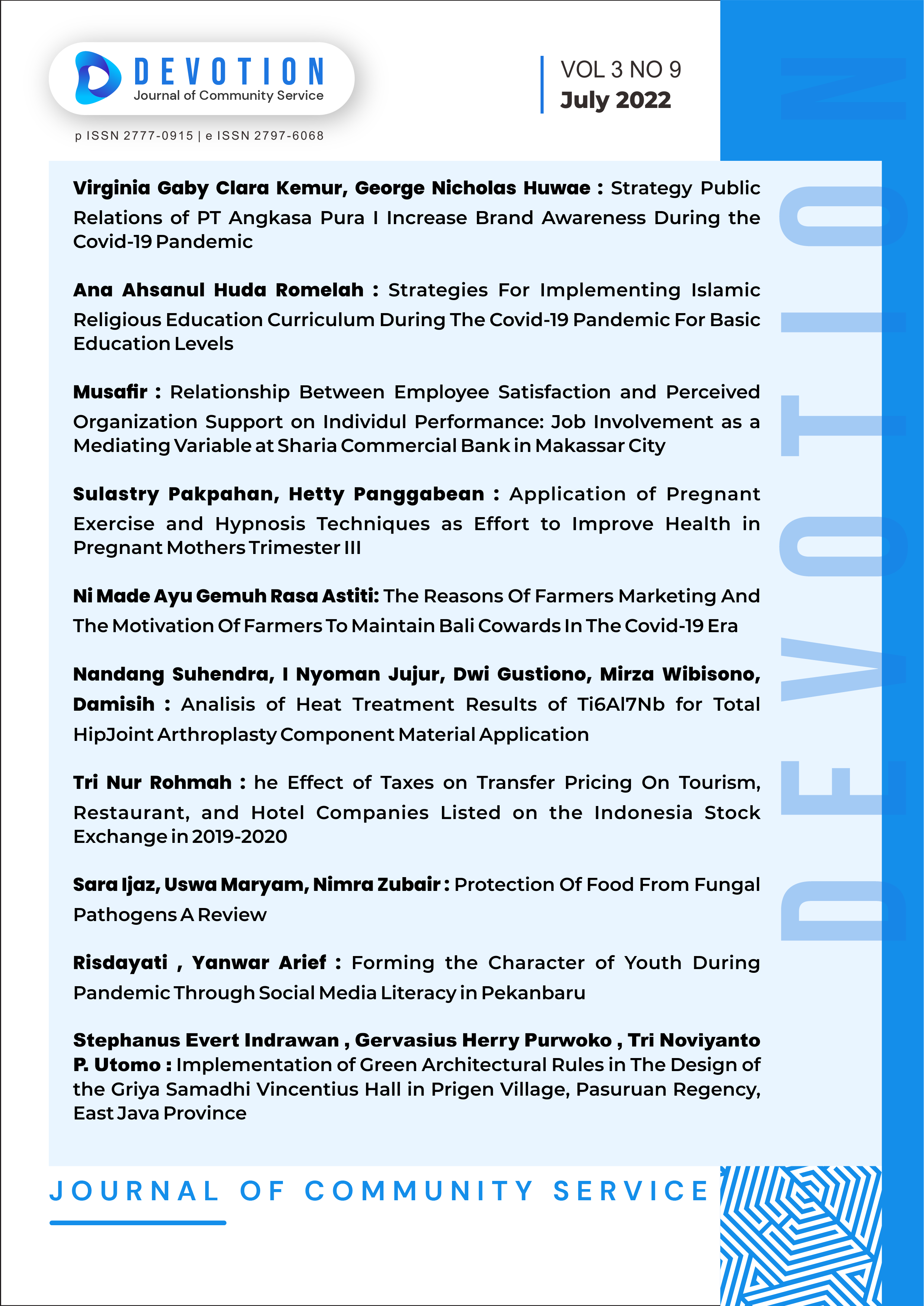Implementation of Green Architectural Rules in the Design of The Griya Samadhi Vincentius Hall In Prigen Village, Pasuruan Regency, East Java Province
DOI:
https://doi.org/10.36418/dev.v3i9.185Keywords:
Environmental Aspects, Green Architecture, Appropriate Site Development, Material Resources and Cycle, Building Environment ManagementAbstract
Griya Samadi Vincent is located in a cool highland, the temperature ranges from 20-24c. A beautiful and quiet area of approximately 6-7 hectares. There is a chapel room and a special indoor room that is usually used for meditation. The entire garden area can be used for outdoor meditation. In addition to the facilities for meditation, there are also several waste processing sites, organic plant nurseries, animal husbandry and the use of biogas as an energy source for the complex. So far, the Griya Samadi Vincentius complex has been managed by the Parish of the Church of the Nativity of the Blessed Virgin Mary, which is a partner of the contributors. So far, Parish, apart from being the manager of financing and maintenance, has also carried out complex developments in terms of the legality of licensing. Where one aspect of licensing is a Building Permit or IMB, in this case the environmental aspect is an important point in regional planning. Therefore, the contributors and the team will plan the building using the Green Architecture method in accordance with the Indonesian Green Building Council standards, namely: Appropriate Site Development, Indoor Air Health and Comfort, Water Conservation, Material Resources and Cycle and Buiding Environment Management.Published
2022-07-14
Issue
Section
Articles
License
Copyright (c) 2022 Stephanus Evert Indrawan, Gervasius Herry Purwoko, Tri Noviyanto P. Utomo

This work is licensed under a Creative Commons Attribution-ShareAlike 4.0 International License.
Authors who publish with this journal agree to the following terms:
- Authors retain copyright and grant the journal right of first publication with the work simultaneously licensed under a Creative Commons Attribution-ShareAlike 4.0 International. that allows others to share the work with an acknowledgement of the work's authorship and initial publication in this journal.
- Authors are able to enter into separate, additional contractual arrangements for the non-exclusive distribution of the journal's published version of the work (e.g., post it to an institutional repository or publish it in a book), with an acknowledgement of its initial publication in this journal.
- Authors are permitted and encouraged to post their work online (e.g., in institutional repositories or on their website) prior to and during the submission process, as it can lead to productive exchanges, as well as earlier and greater citation of published work.













